PROJECT OVERVIEW
The Problem
Hospital-wide research and clinical data are not integrated.
THE GOAL
We want to create an intuitive user interface for an upgraded data management system that integrates the diverse needs of researchers, clinicians, executives, and engineers across the hospital.
USER RESEARCH
We conducted interviews with users (inpatient mental health professionals including nurses, mental health associates, clinicians, and researchers) to understand their pain points related to Q-15 checks.
PAIN POINTS
"Data is managed separately across the hospital which makes analyzing data from multiple sources inefficient."
"The way the current system exports the clinical outcomes data is not suitable for running research analyses. A lot of post-processing is required."
"The current system is confusing and crashes a lot."
We defined goals for our solution based on identified user pain points.
PROJECT GOALS
"Integrate data from all sources - research studies, electronic health records, clinical outcomes, etcetera."
"Have different exporting/reporting options for different types of user needs. For example, a clinician will need different data than a research scientist."
"Be straightforward and intuitive to use."
STARTING THE DESIGN
INFORMATION ARCHITECTURE
In addition to the graphical user interface, I collaborated with the engineering team to conceptualize the new data management structure. We conducted interviews with research and clinical team members to best understand the current state (location, format, any integrations) of all data. This helped me better understand the needs of the interface design to meet user's needs and expectations.
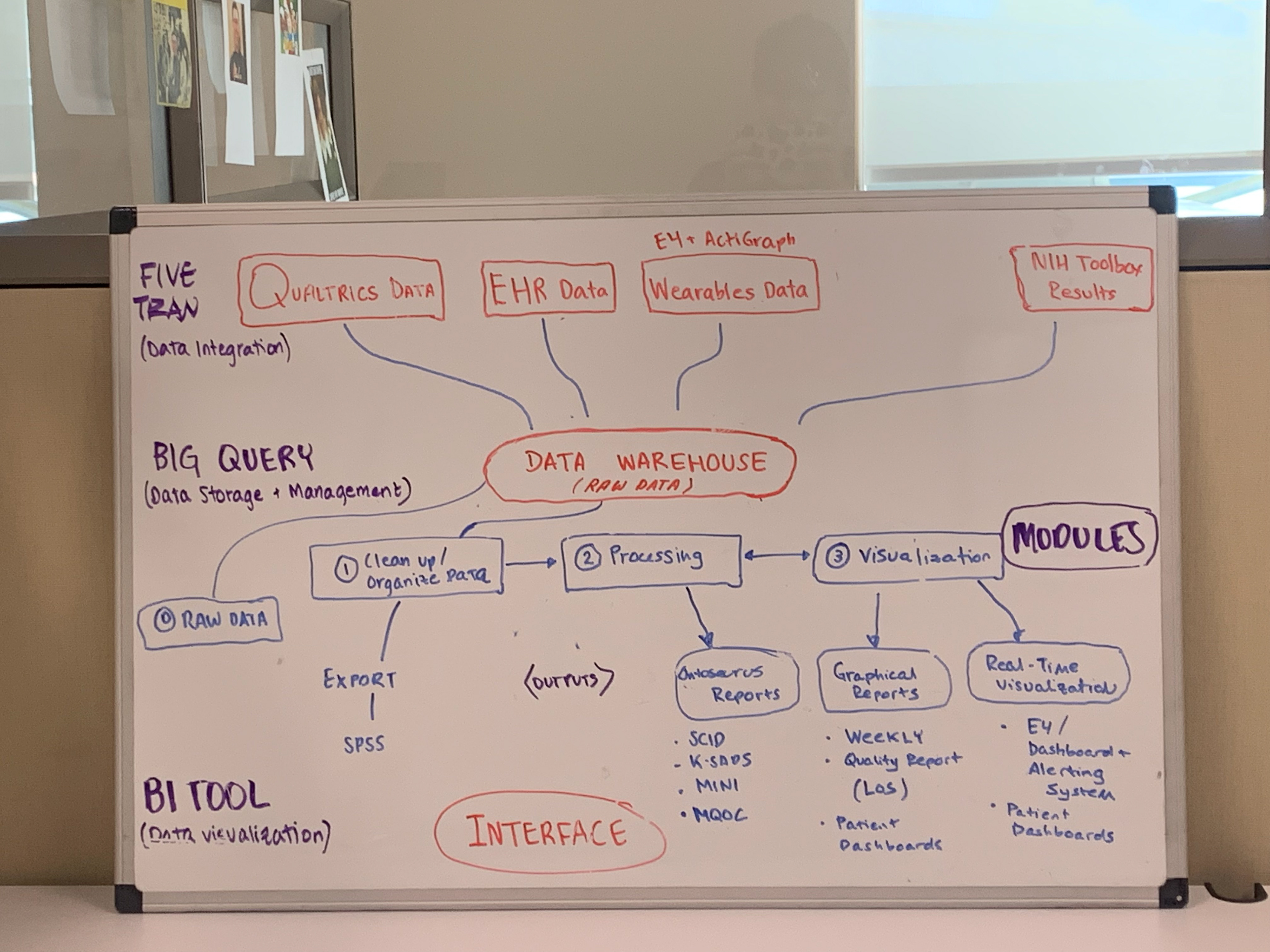
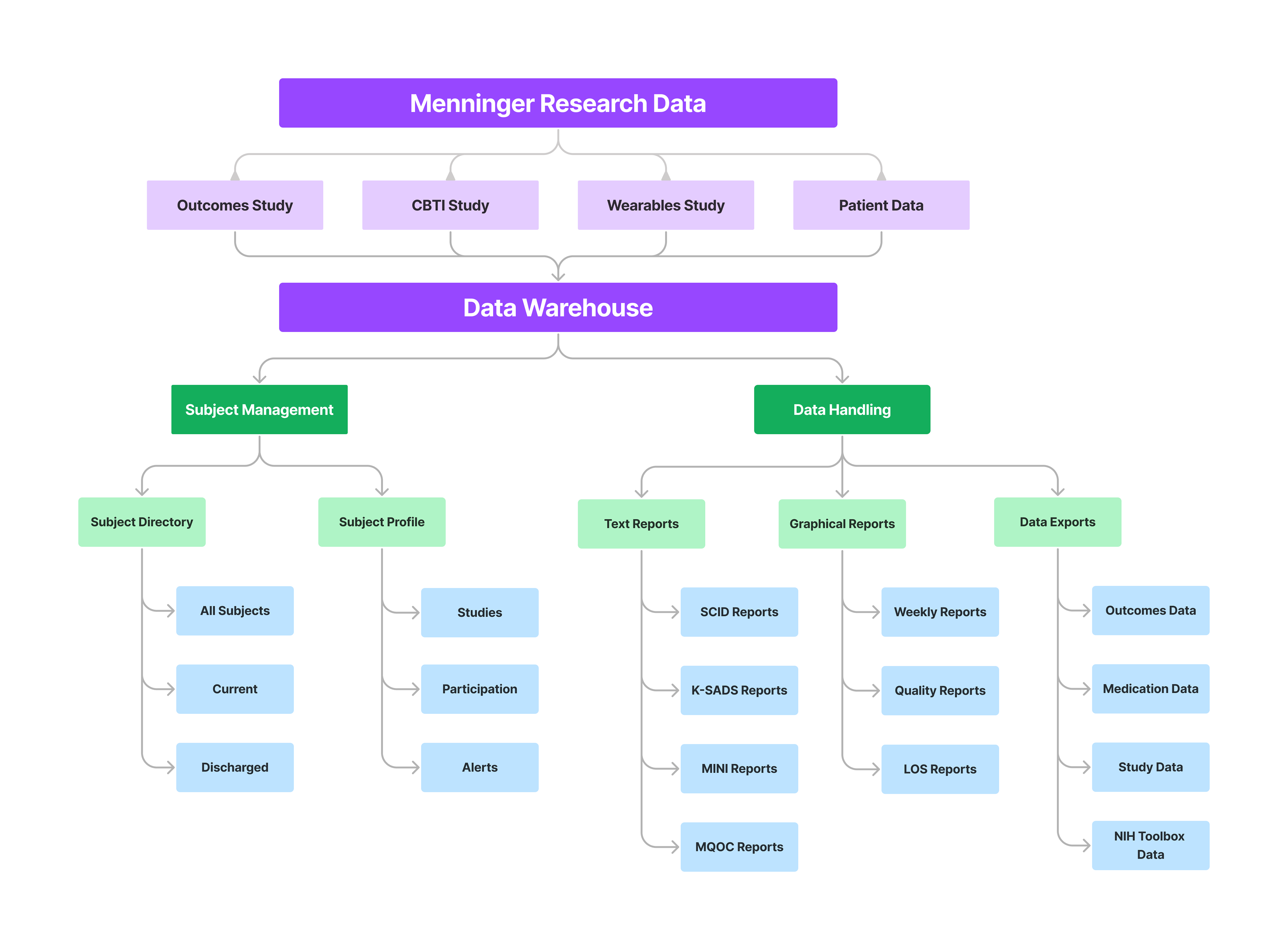
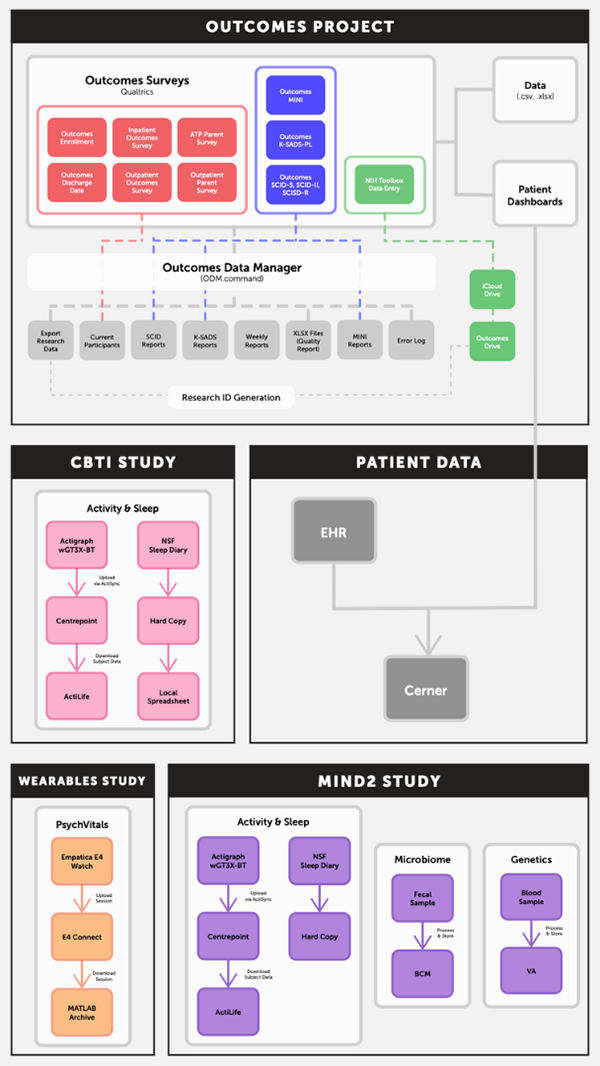

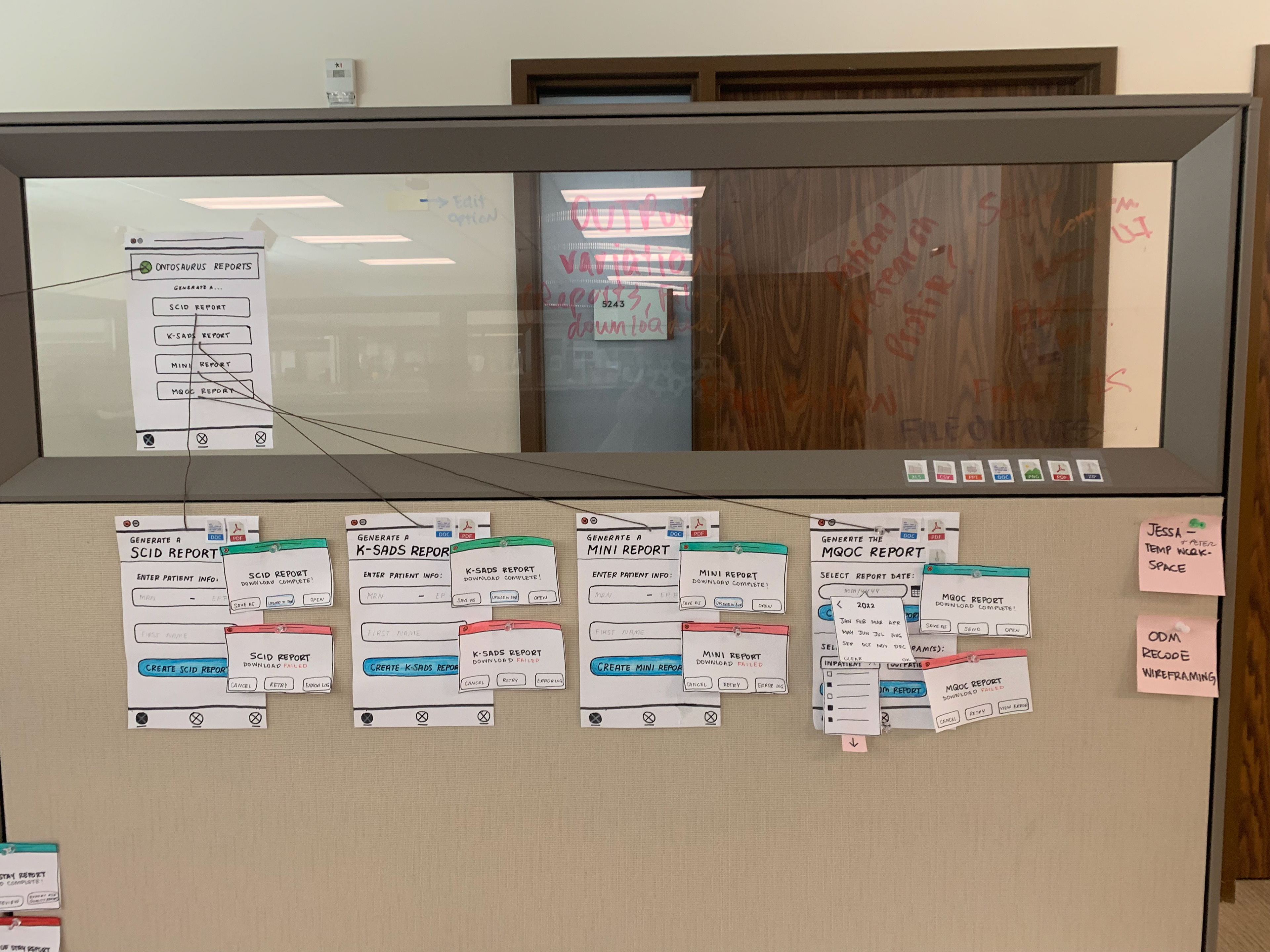

PAPER WIREFRAMING
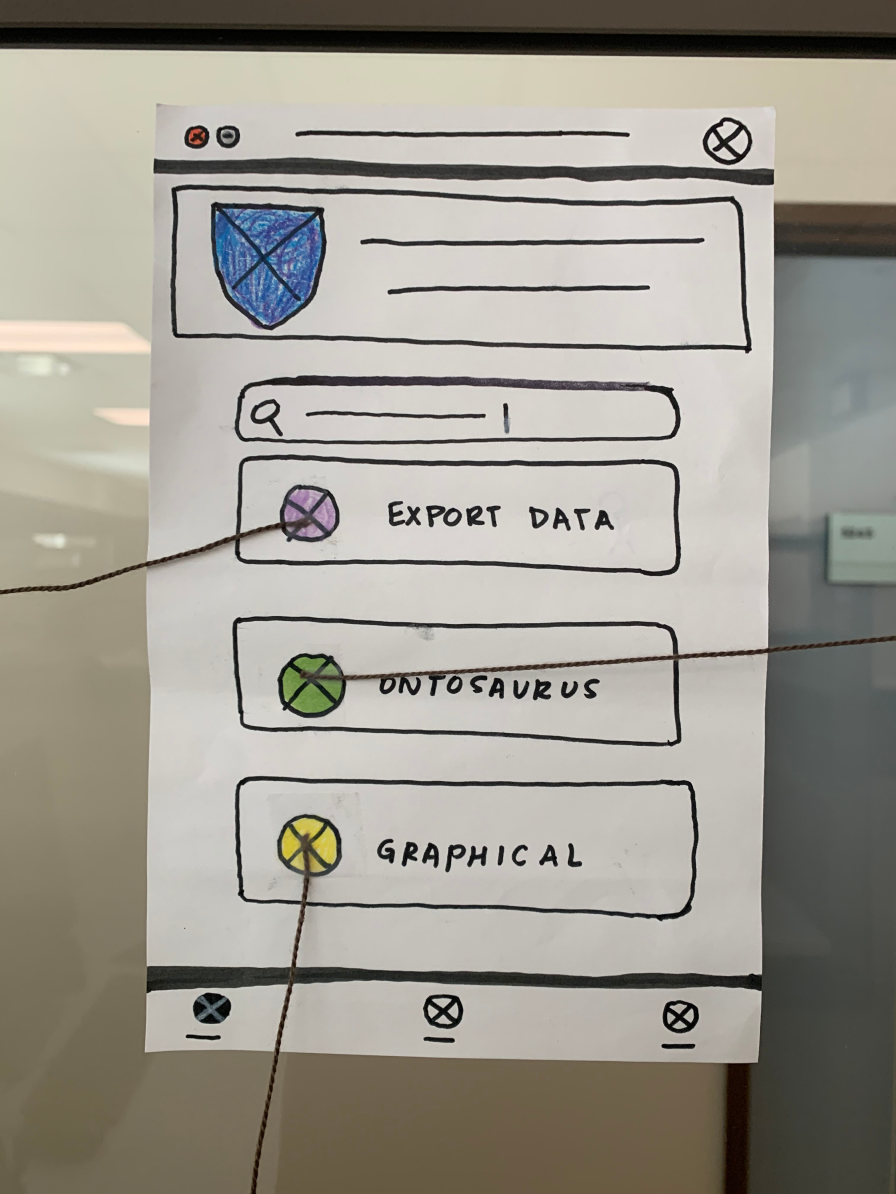


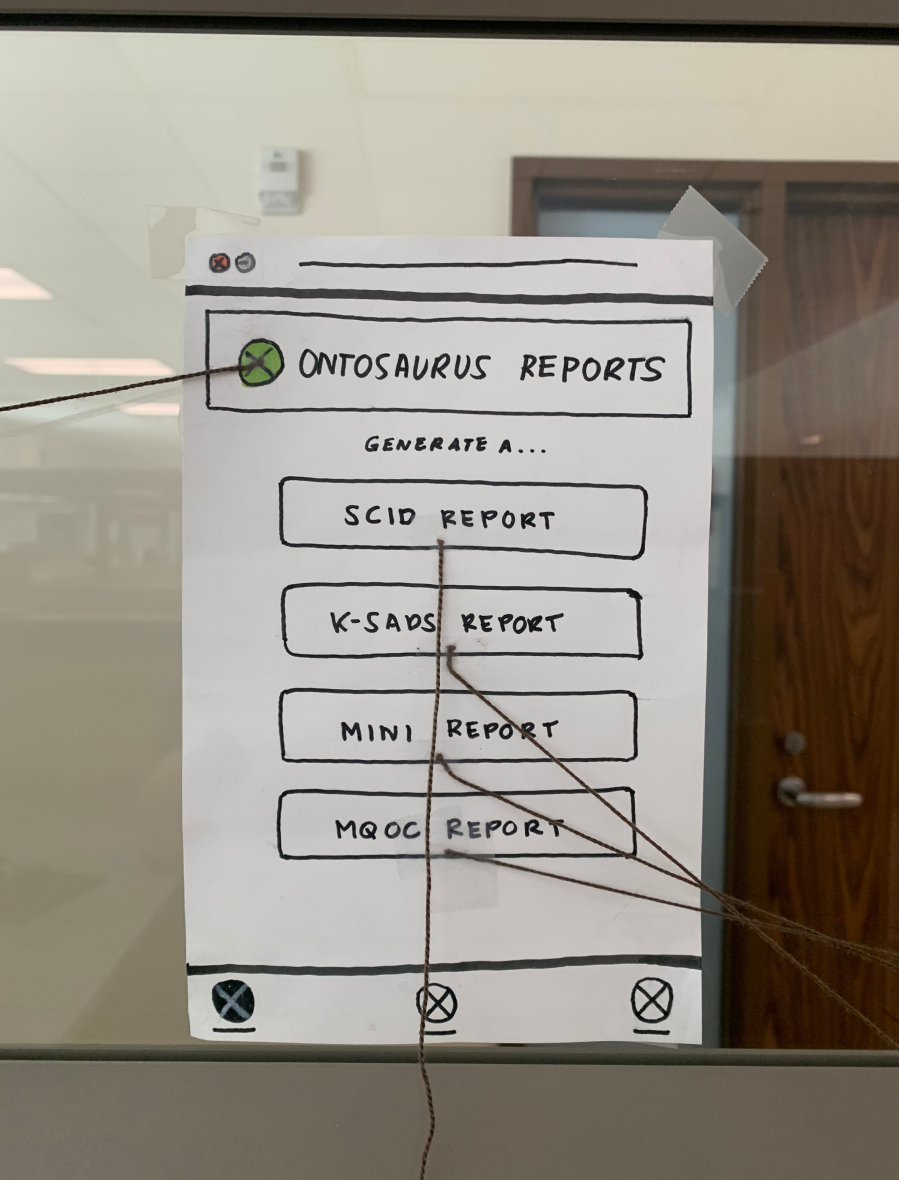
REFINING THE DESIGN
One of the primary issues with the previous data management system, was lack of clarity around and integration of its functions. I used the information architecture to define the four primary functions for an improved data management system that would meet the needs of every user. I designed it to be modular, and different functionality could be assigned by user type to limit confusion and maximize usability.
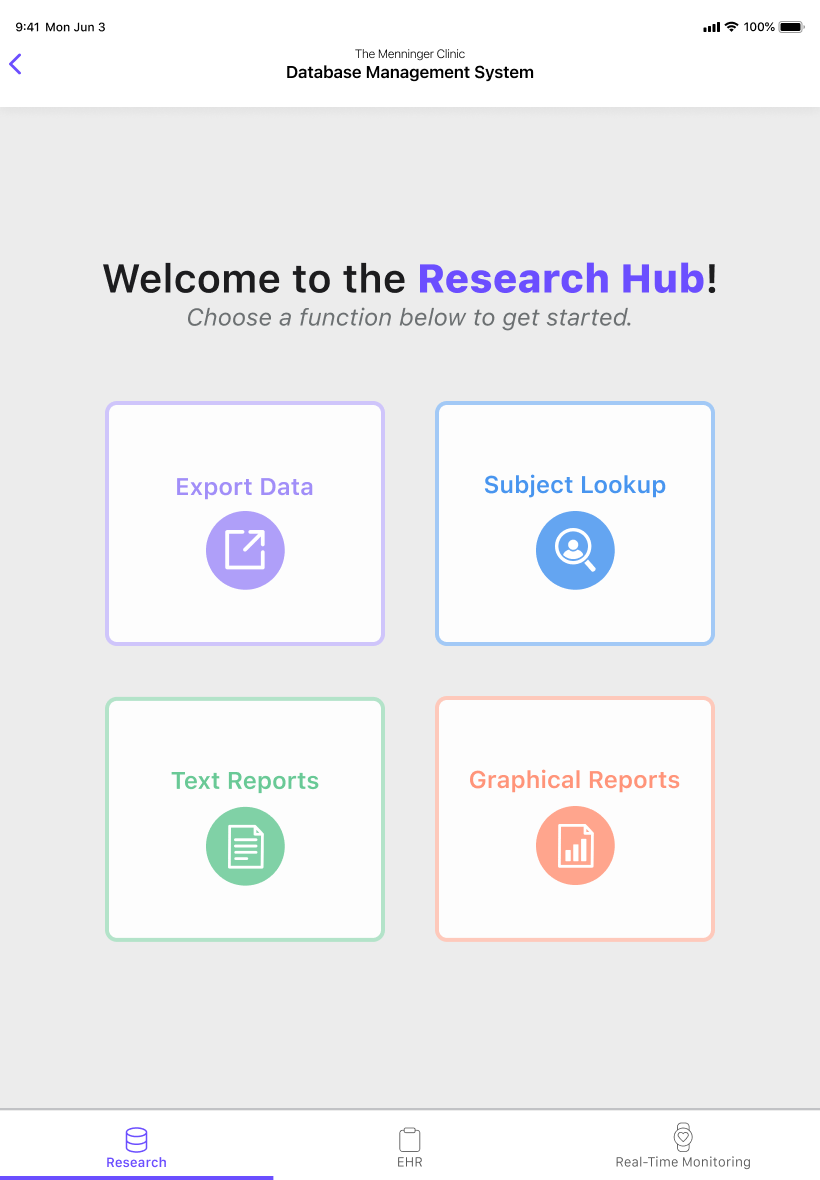
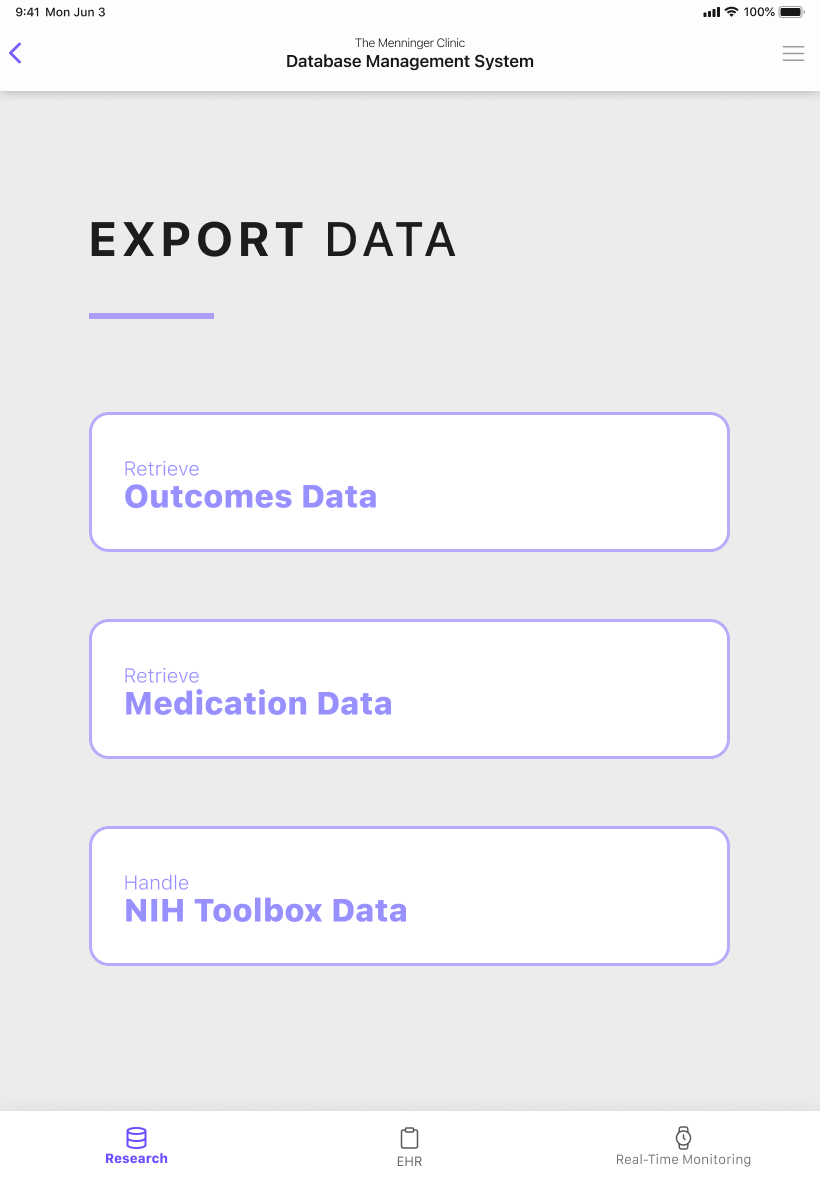
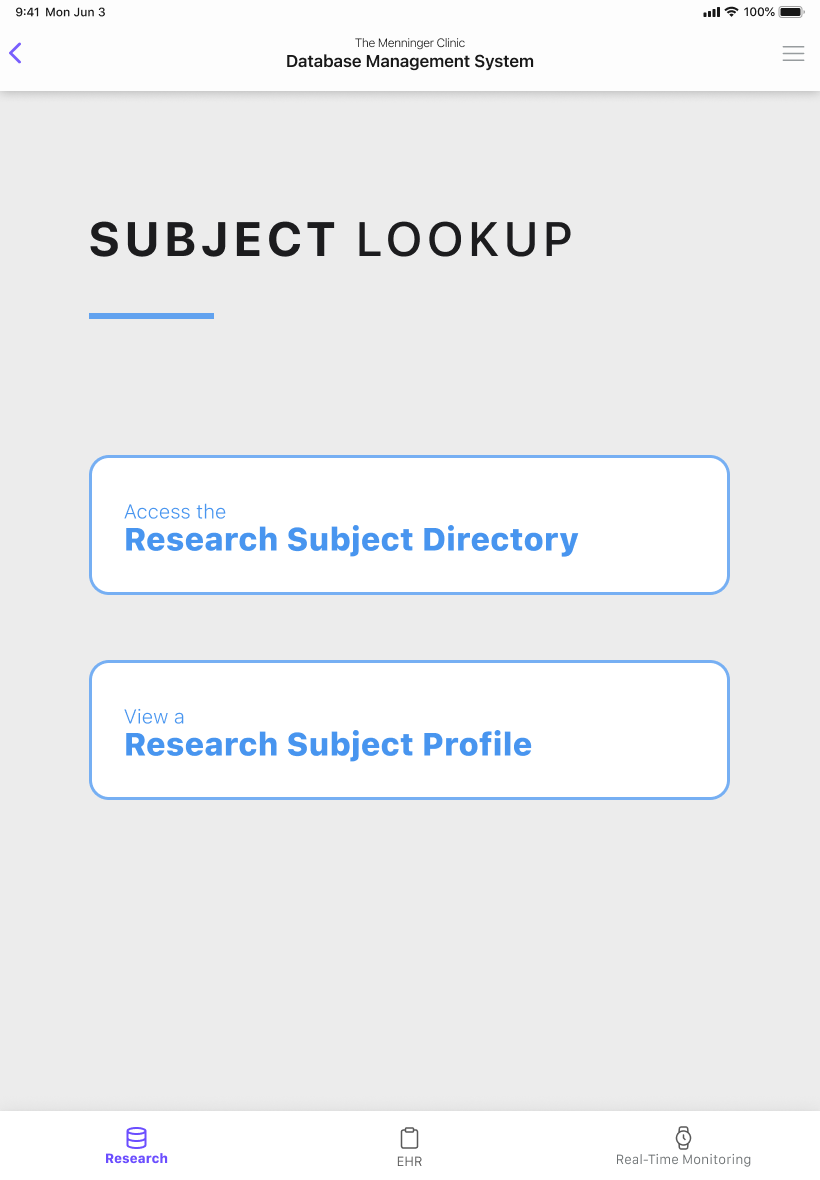

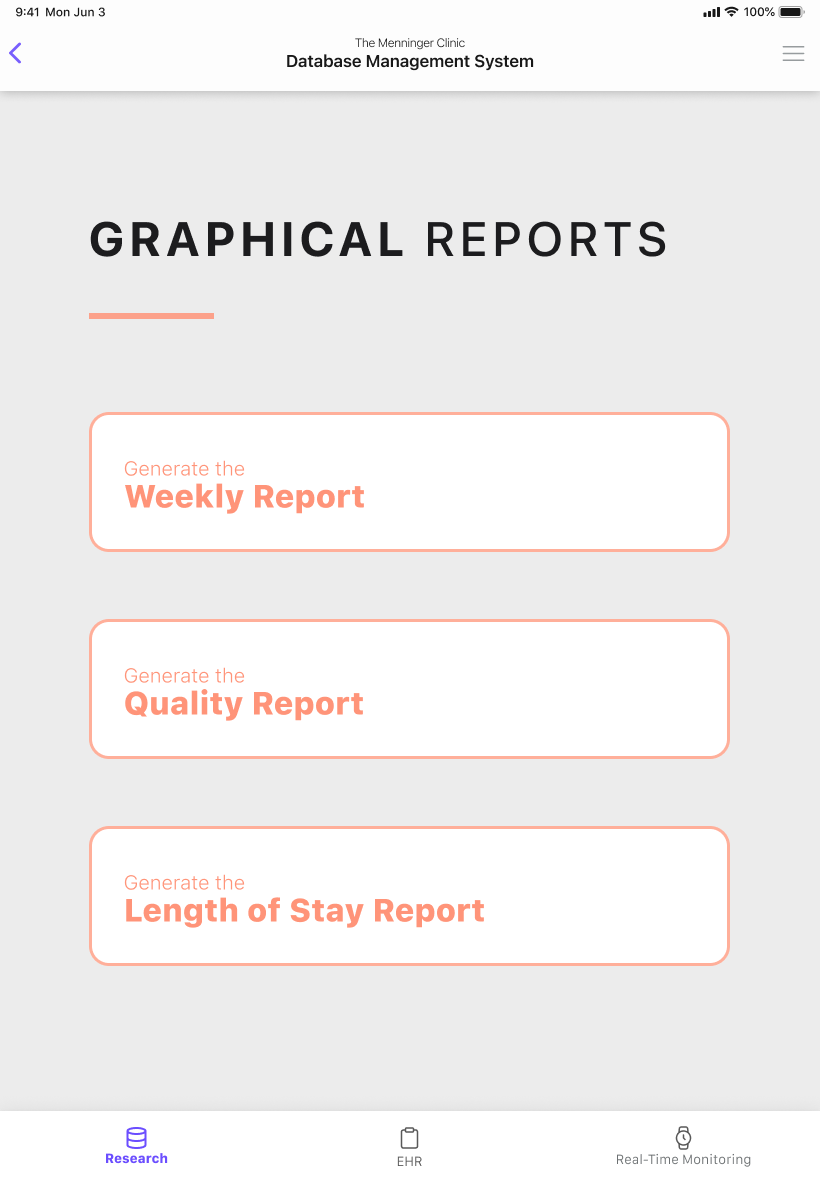
GOING FORWARD
IMPACT
This project is still an ongoing effort, but has given me valuable experience in conceptualizing information architecture and empathy research with a group of users with widely ranging needs around disparate sets of data.